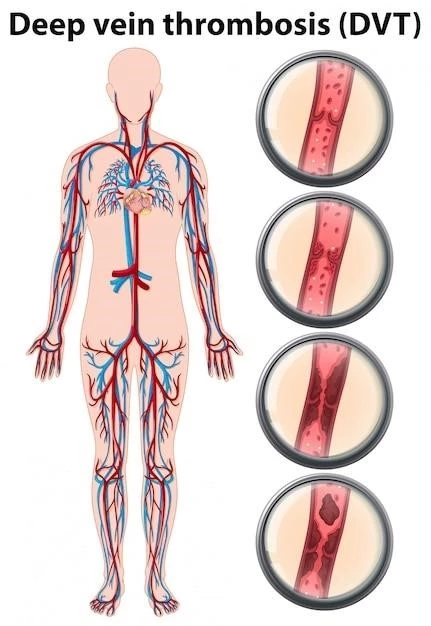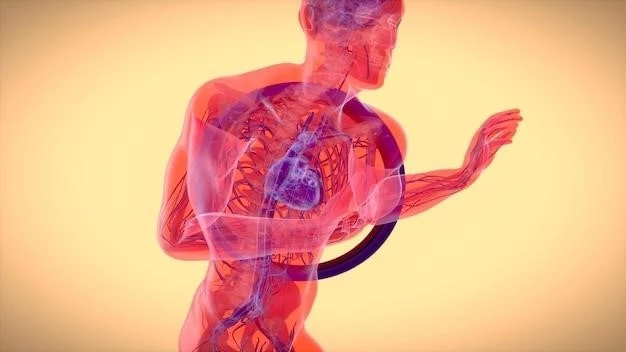Fibromuscular Dysplasia (FMD) of Arteries
Fibromuscular Dysplasia (FMD) affects blood vessels like renal arteries and carotid arteries. This condition can lead to vascular disease and hypertension. Understanding the symptoms, diagnosis, and treatment options is crucial for managing FMD effectively.
Introduction
Welcome to our comprehensive guide on Fibromuscular Dysplasia (FMD) of Arteries. This condition affects the normal structure of blood vessels, particularly the renal arteries and carotid arteries. Understanding FMD is crucial as it can lead to various complications such as vascular disease and hypertension. In this article, we will explore the link between FMD and vascular issues, the symptoms to watch out for, the diagnosis process, available treatment options, lifestyle changes that can help manage FMD, as well as follow-up care and support resources for individuals living with this condition. By educating yourself about FMD, you can take proactive steps towards managing your health effectively. Let’s delve deeper into the world of Fibromuscular Dysplasia and empower ourselves with knowledge and resources to navigate this condition with confidence.
Understanding Arterial Dysplasia
Arterial dysplasia, specifically Fibromuscular Dysplasia (FMD), is a condition characterized by abnormal cell development in the walls of arteries. This leads to the narrowing, bulging, or twisting of the affected arteries, disrupting normal blood flow. FMD commonly affects the renal arteries that supply blood to the kidneys and the carotid arteries in the neck that supply blood to the brain. Understanding arterial dysplasia is essential to grasp how it impacts overall vascular health. By learning about the underlying mechanisms of FMD, individuals can better comprehend the potential consequences and complications associated with this condition. Stay informed about arterial dysplasia to make informed decisions about your health and work closely with healthcare professionals to manage FMD effectively.
Commonly Affected Blood Vessels
In Fibromuscular Dysplasia (FMD), certain blood vessels are commonly affected, including the renal arteries that supply blood to the kidneys and the carotid arteries in the neck that supply blood to the brain. When these arteries are compromised due to FMD, it can result in various symptoms and complications. Recognizing which blood vessels are typically affected by FMD is crucial for early detection and intervention. By understanding the specific arteries at risk, individuals can monitor their health closely and seek appropriate medical attention if they experience symptoms related to FMD in these areas. Stay vigilant about the commonly affected blood vessels associated with FMD to prioritize your vascular health and well-being.
Link Between FMD and Vascular Disease
Fibromuscular Dysplasia (FMD) is closely linked to the development of vascular disease. The abnormal cell growth and structural changes in the arterial walls characteristic of FMD can lead to complications such as arterial stenosis, aneurysms, and dissections. These vascular issues pose a risk to overall cardiovascular health and can result in serious consequences if left untreated. Understanding the connection between FMD and vascular disease is essential for individuals diagnosed with this condition. By recognizing this link, patients can work with healthcare providers to proactively manage their vascular health, reduce the risk of complications, and prevent further progression of arterial abnormalities associated with FMD. Stay informed about the relationship between FMD and vascular disease to prioritize proactive health management.
Relationship between FMD and Hypertension
There is a significant relationship between Fibromuscular Dysplasia (FMD) and hypertension. FMD can lead to renovascular hypertension, a type of high blood pressure caused by abnormal renal arteries affected by FMD. The narrowing or blockage of the renal arteries can disrupt the blood flow to the kidneys, triggering the body’s renin-angiotensin system and ultimately raising blood pressure levels. Understanding the connection between FMD and hypertension is crucial for individuals with this condition as it impacts cardiovascular health. By managing hypertension effectively through lifestyle changes, medication, and close monitoring, individuals with FMD can reduce the risk of complications and improve overall well-being. Stay informed about the relationship between FMD and hypertension to take proactive steps in managing blood pressure and maintaining vascular health.
Recognizing Symptoms of FMD
Recognizing the symptoms of Fibromuscular Dysplasia (FMD) is crucial for early detection and prompt intervention. Common symptoms of FMD may include unexplained high blood pressure, headaches, dizziness, ringing in the ears (tinnitus), and changes in vision. Some individuals with FMD may also experience neck pain, chest pain, or abdominal pain. It is important to note that symptoms can vary depending on the affected arteries. By being aware of these signs, individuals can seek medical evaluation and diagnosis to effectively manage FMD and prevent complications. Stay vigilant about recognizing the symptoms of FMD to advocate for your health and well-being.
Diagnosis of FMD
Diagnosing Fibromuscular Dysplasia (FMD) involves a comprehensive evaluation to confirm the presence of arterial abnormalities. Diagnostic tests for FMD may include imaging studies such as angiography, ultrasound, CT scans, or MRI scans to visualize the affected arteries and assess blood flow. Blood pressure measurements in different areas of the body can also help detect potential blockages or narrowing in the arteries. Additionally, your healthcare provider may recommend blood tests to assess kidney function and hormone levels related to hypertension. It is essential to collaborate with healthcare professionals specializing in vascular conditions to reach an accurate diagnosis of FMD. By undergoing thorough diagnostic evaluations, individuals can initiate appropriate treatment plans and lifestyle modifications to manage FMD effectively. Seek timely diagnosis and expert medical guidance to prioritize your vascular health.
Treatment Options for FMD
Treating Fibromuscular Dysplasia (FMD) aims to manage symptoms, improve blood flow, and reduce the risk of complications associated with arterial abnormalities. Treatment options for FMD may include medications to control blood pressure, prevent blood clots, or manage cholesterol levels. In cases where arterial blockages are severe, procedures such as angioplasty with or without stent placement may be recommended to widen narrowed arteries and restore proper blood flow. Surgical interventions, such as bypass surgery, may be necessary in certain situations to reestablish healthy blood circulation. Lifestyle modifications, including a heart-healthy diet, regular exercise, stress management, and smoking cessation, are vital for managing FMD and promoting overall cardiovascular wellness. Collaborate closely with healthcare providers to determine the most suitable treatment approach for your specific condition and prioritize vascular health.
Lifestyle Changes for Managing FMD
Implementing lifestyle changes is essential for effectively managing Fibromuscular Dysplasia (FMD) and promoting vascular health. Adopting a heart-healthy diet rich in fruits, vegetables, whole grains, and lean proteins can help control blood pressure and cholesterol levels. Engaging in regular physical activity, such as walking, swimming, or cycling, can improve cardiovascular fitness and overall well-being. Managing stress through relaxation techniques, mindfulness, or hobbies can contribute to better emotional and physical health. Smoking cessation is paramount as it reduces the risk of further damage to blood vessels. Maintaining a healthy weight and monitoring blood pressure regularly are crucial steps in managing FMD. By incorporating these lifestyle changes into daily routines, individuals can positively impact their vascular health, reduce symptoms, and enhance quality of life. Consult with healthcare professionals to create a tailored lifestyle plan that supports your FMD management goals.
Follow-up Care and Monitoring
Regular follow-up care and monitoring are essential components of managing Fibromuscular Dysplasia (FMD) to track disease progression and treatment effectiveness. Scheduled check-ups with healthcare providers allow for blood pressure measurements, assessments of symptoms, and evaluations of overall vascular health. Monitoring kidney function and hormone levels related to hypertension can help detect any changes that require intervention. Imaging studies, such as angiography or ultrasound, may be repeated periodically to assess the condition of affected arteries. Collaborate with a multidisciplinary team of specialists, including vascular surgeons, interventional radiologists, and cardiologists, to coordinate comprehensive follow-up care. By remaining proactive in monitoring FMD and adhering to recommended check-up schedules, individuals can optimize their treatment outcomes, manage symptoms effectively, and reduce the risk of complications associated with arterial dysplasia.
Support Resources for FMD Patients
Accessing support resources is crucial for individuals living with Fibromuscular Dysplasia (FMD) to navigate their health journey effectively. Seek out patient advocacy groups, online forums, and community organizations dedicated to vascular health to connect with others who understand your experiences. These resources can provide valuable information, emotional support, and practical advice for managing FMD and coping with its impact on daily life. Consider joining support groups or participating in educational events to stay informed about the latest treatments and research developments related to FMD. Engage with healthcare providers, counselors, and social workers who specialize in vascular conditions to access additional support and guidance. Remember, you are not alone in your FMD journey, and there are resources available to help you feel empowered, informed, and supported along the way.
Prevention Strategies for FMD

While Fibromuscular Dysplasia (FMD) may not always be preventable due to its underlying causes, there are strategies individuals can adopt to promote vascular health and potentially reduce the risk of complications. Maintaining a healthy lifestyle that includes regular exercise, a balanced diet, stress management, and avoiding tobacco products can support overall cardiovascular wellness. Monitoring blood pressure levels, cholesterol, and kidney function through routine check-ups can help detect early signs of vascular issues. Individuals with a family history of FMD or related conditions should discuss screening options with healthcare providers to identify potential risk factors early. Stay informed about FMD, its symptoms, and associated vascular diseases to take proactive steps towards prevention and early intervention. By prioritizing preventive strategies and healthy habits, individuals can support their vascular health and well-being in the long term.
Conclusion
In conclusion, Fibromuscular Dysplasia (FMD) of arteries is a complex condition that can impact vascular health, leading to complications such as hypertension and vascular disease. Understanding the symptoms, diagnosis process, treatment options, lifestyle changes, and follow-up care is pivotal in effectively managing FMD. By staying informed about the link between FMD and vascular issues, recognizing symptoms, seeking timely diagnosis, and implementing treatment plans, individuals can take control of their health outcomes. Lifestyle modifications, regular monitoring, and accessing support resources play crucial roles in navigating the challenges posed by FMD. Remember, proactive management, adherence to treatment guidelines, and a positive mindset can empower individuals living with FMD to lead fulfilling lives while prioritizing their vascular well-being. Stay engaged with healthcare providers, advocate for your health needs, and remain vigilant in maintaining a heart-healthy lifestyle to manage FMD effectively.
